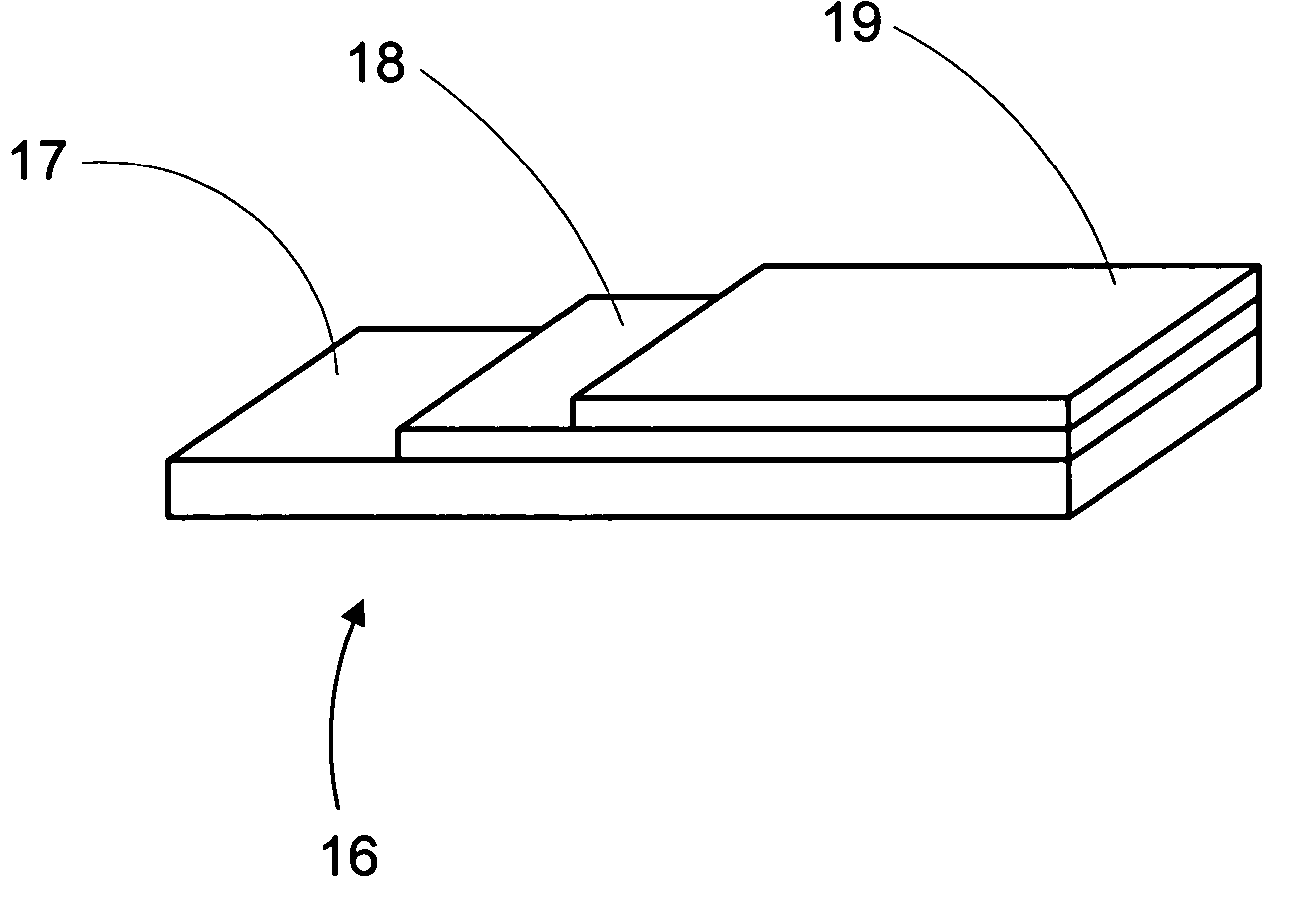Anode-supported solid oxide fuel cells using a cermet electrolyte
- Summary
- Abstract
- Description
- Claims
- Application Information
AI Technical Summary
Benefits of technology
Problems solved by technology
Method used
Image
Examples
example 1
Fabrication of a Tubular Fuel Electrode Support by Extrusion
[0079] Tubular fuel electrode supports are preferably molded via extrusion of pastes, i.e., plastic masses (see J. Benbow et al., “Paste Flow and Extrusion”, Clarendon Press, January 1993).
[0080] A green oxide, NiO powder, is mixed with a Y8SZ powder, so that following reduction of NiO, the amount of Ni introduced in the mixture ranges from 30 to 80 vol %. The paste composition further includes distilled water (carrier), methylcellulose or hydroxypropyl methylcellulose (binder), and glycerol or polyethylene glycol (plasticizer). Appropriate paste compositions can include 70 to 90 wt % solids loading (NiO+Y8SZ), 5 to 25 wt % water, 1 to 15 wt % binder, and 0.1 to 5 wt % plasticizer. The composition is then mixed under conditions of high shear, using a high-shear mixer, such as a sigma-blade mixer, so that a homogeneous plastic mass is formed.
[0081] Optional additives include pore formers (e.g., carbon powder, starch, and ...
example 2
Preparation and Coating / Sintering of Cermet Electrolyte
[0084] The cermet electrolyte slurry is a multi-component system, containing in particular a solvent (20 to 60 wt %), an inorganic phase (40 to 80 wt %), a dispersing agent (0.1 to 3 wt %), a binding agent (1 to 15 wt %), and a plasticizing agent (1 to 15 wt %).
[0085] The solvent allows the powders to be dispersed and ensures that the organic components are dissolved. Water is the preferred medium, but easier processing is often achieved by using organic media, such as alcohols and ketones.
[0086] The inorganic phase is made of a primary Y8SZ phase and a secondary green NiO phase, so that, following reduction of NiO, the amount of Ni introduced in the mixture ranges from 0.1-15.0 vol %. The properties required from an ideally sinterable powder to produce a theoretically dense coating are a fine particle size (i.e., 0.1 to 1.0 micron), a narrow particle size distribution, an equiaxed shape, and a non-agglomerated state.
[0087] ...
example 3
Preparation and Coating of Air Electrodes
[0095] Cathode mixtures are prepared in the same manner as the one described for the cermet electrolyte slurry of Example 2. The first cathode layer is a mixture of cathode material (e.g., 50 wt %) and Y8SZ (e.g., 50 wt %). The preferred cathode materials are La1-xSrxMnO3 and La1-xSnxFeO3, wherein x is between 0.1 and 0.5. The second electrode is a single-phase cathode material, used for enhanced electrical conductivity, typically consisting of the aforementioned preferred cathode materials.
[0096] Air electrodes can be painted or sprayed, for example using an airbrush, however, other methods know in the art are equally suitable. After drying, they are sintered at relatively low temperatures, typically below 1200° C., with a dwell time preferably between 0.5 and 4.0 hours.
PUM
| Property | Measurement | Unit |
|---|---|---|
| Thickness | aaaaa | aaaaa |
| Thickness | aaaaa | aaaaa |
| Thickness | aaaaa | aaaaa |
Abstract
Description
Claims
Application Information
 Login to View More
Login to View More - R&D
- Intellectual Property
- Life Sciences
- Materials
- Tech Scout
- Unparalleled Data Quality
- Higher Quality Content
- 60% Fewer Hallucinations
Browse by: Latest US Patents, China's latest patents, Technical Efficacy Thesaurus, Application Domain, Technology Topic, Popular Technical Reports.
© 2025 PatSnap. All rights reserved.Legal|Privacy policy|Modern Slavery Act Transparency Statement|Sitemap|About US| Contact US: help@patsnap.com



